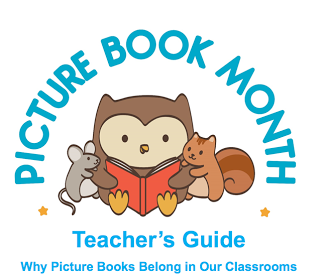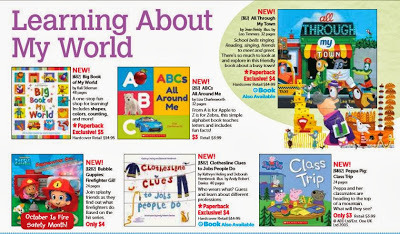Jean Reidy's Blog, page 18
February 1, 2014
Critique Questions for the Average Mike ... Picture Book Edition.
 Sometimes the freshest eyes are those of readers who don't also write. And without minds muddied by picture book writing rules or market madness, Average Mike (nicknamed after my husband who sometimes fills this role) readers can offer a quick, clear assessment of where your story works or doesn't. With just one read under their belts, they're also a barometer for complexity of picture book plot. After all, they won't have multiple reads to figure it out.
Sometimes the freshest eyes are those of readers who don't also write. And without minds muddied by picture book writing rules or market madness, Average Mike (nicknamed after my husband who sometimes fills this role) readers can offer a quick, clear assessment of where your story works or doesn't. With just one read under their belts, they're also a barometer for complexity of picture book plot. After all, they won't have multiple reads to figure it out.So here's how best to use an Average Mike reader.
Pick an Average Mike - someone who doesn't write. Maybe even someone who doesn't often read in your genre. Ask him to read your story slowly and carefully and tell him that you'll be asking him several questions when he's done. DO NOT tell him what to look for in the story or what questions you'll be asking. If your chosen reader loves to "edit" or catch grammar, punctuation or spelling mistakes, tell him that this isn't the draft for that. That you'll be turning to him for help with that in a later draft.
When he begins reading, leave the room. Have him call you back in when he's done. Have him hand the manuscript back to you so that you can take notes on it and so he doesn't peek or scan it for answers.
Then ask him to do the following/answer the following questions (if any of the questions are not applicable, simply eliminate them):
Retell the story in simple terms - in particular describe the cause and effect of each plot point. Who is the main character? What does he/she want most? Are there significant secondary characters? What do they want most? Describe each of the significant characters in the story and how you see them? Retell the story in terms of actions and motivations of the significant secondary characters? Describe significant character emotions during the story. Describe the cause of each. Where did the logic of the story trip you up? What makes the main character stand out? How is she/he different? What is the climax of the story? What happens there? Does it work? How is the main character's problem resolved? How are any secondary characters' problems resolved? Does the solution/conclusion of the story make sense? Why or why not?Did you find the ending satisfying? What questions were you left with at the end? What did you like best? What bugged you most? Where did the language or rhythm of the story trip you up?Did anything in or about the story surprise you? What and why?How did you feel as you were reading the story? Notice how none of the questions are YES/NO. Let your reader talk. You should simply listen and take notes. Try to refrain from explaining or even reacting if your reader has misunderstood your story or has understood something incorrectly.
Feel free to tailor the questions with specific character names or plot points as necessary. But beware of directing your reader to the answers you want. They may not be the answers you need to hear.
What questions would you add to the list?
See also "Critique Questions for the Average Joe ... or Mike" middle grade novel edition.
Published on February 01, 2014 14:41
January 15, 2014
Let's schedule a Skype visit today!
Offering FREE 20-30 minute author visits for the rest of the school year!
Published on January 15, 2014 15:34
Let schedule a Skype visit today!
Offering FREE 20-30 minute author visits for the rest of the school year!
Published on January 15, 2014 15:34
December 10, 2013
Colorado Gives to Reach Out and Read!
Dear Friends,
 As I’m sure you know, today is Colorado Gives Day. No doubt you are receiving many emails and appeals from worthy charitable organizations throughout our great state. I hope you’ll indulge me as I ask you to join me in supporting Reach Out and Read Colorado today. Reach Out and Read Colorado has a goal of raising enough money to purchase 10,000 books in 24 hours for low-income children in our state. A gift of $100 will purchase 25 books. Donate now. Reach Out and Read Colorado works with doctors and other health care providers to give new, age-appropriate books to children at well-child visits between 6 months and 5 years of age, and to advise parents about the importance of reading aloud with their children. Studies show that early exposure to books and reading is one of the most effective ways to ensure that all children start school ready to read, learn and succeed.
As I’m sure you know, today is Colorado Gives Day. No doubt you are receiving many emails and appeals from worthy charitable organizations throughout our great state. I hope you’ll indulge me as I ask you to join me in supporting Reach Out and Read Colorado today. Reach Out and Read Colorado has a goal of raising enough money to purchase 10,000 books in 24 hours for low-income children in our state. A gift of $100 will purchase 25 books. Donate now. Reach Out and Read Colorado works with doctors and other health care providers to give new, age-appropriate books to children at well-child visits between 6 months and 5 years of age, and to advise parents about the importance of reading aloud with their children. Studies show that early exposure to books and reading is one of the most effective ways to ensure that all children start school ready to read, learn and succeed. Reach Out and Read is a prescription for literacy. Numerous independent, published research studies prove that it works. In addition to receiving the prestigious David M. Rubenstein award from the Library of Congress this year for its groundbreaking contribution to the sustained advancement of literacy worldwide, Reach Out and Read was recently recommended by New York Times columnist Nicholas D. Kristof in his Season of Giving column. Reach Out and Read Colorado administers the national model in our state, and currently serves about half of Colorado’s low-income children. All money donated on Colorado Gives Day will support the program right here in Colorado.
Please join me in supporting Reach Out and Read Colorado in its efforts to raise enough money to purchase 10,000 books in 24 hours. Gifts of any amount will be a vital boost to this effort. Donate now to improve literacy outcomes for Colorado children.
Thank you!
Jean
Published on December 10, 2013 05:55
November 20, 2013
States I've Covered in My School Skype Visits
Create your own visited states map or check out the JavaScript Maps.
Will your state be next? Schedule a FREE Skype visit today. It's easy.
You can find the details on my Time Out For Teachers webpage.
I hope to hear from you soon!
Published on November 20, 2013 16:19
November 11, 2013
Picture Book Month: "Ask the Education Consultant" Blog Hop!
 I'm thrilled, as part of Picture Book Month, to host Educational Consultant, Marcie Colleen. Marcie is not only a teacher but also a picture book writer who so understands the importance of picture books in the education and lives of kids.
I'm thrilled, as part of Picture Book Month, to host Educational Consultant, Marcie Colleen. Marcie is not only a teacher but also a picture book writer who so understands the importance of picture books in the education and lives of kids.Today, she stopped by to answer a few of my most pressing picture book questions.
1. What would you say to a parent who insists that his/her young child is too old or too advanced a reader for picture books?
Ah, yes. We are so focused these days on reading levels and the like. Of course, some parent might have objections. However, the Common Core State Standards stress reading a variety of text across many genres, while also analyzing the audience the book was written for and who authored the book. So, when you look at it that way, students can become very savvy readers when studying varying texts with a similar theme.
For example, when I taught 7th grade English Language Arts, we read The Diary of Anne Frank and had an entire curriculum about the Holocaust. I also introduced Dr. Seuss’ The Sneetches to the class which has a strong theme of prejudice and discrimination. We not only discussed the plot and issues of The Sneetches, but analyzed Dr. Seuss’ inspiration for the story, as well as his intended audience and approach to such a topic, looping it back to The Diary of Anne Frank and other texts about anti-Semitism.
That’s a long-winded answer, but our students should be introduced to the written word across many genres to inform their skills are readers. Newspapers, magazines, internet blogs, encyclopedias, interviews, diaries, letters, fiction novels, etc. And yes, picture books.
2. What would you say to a young child who says that he/she is too old or too advanced a reader for picture books?
Great question. A child who is in 1st or 3rd grade fights so hard to be older. They might perceive these books as babyish. Also, adults are sometimes guilty of trying to push kids when it comes to reading level.
When confronted with this issue, I like to empower the student. Tell them you understand that these books might seem too young for them, but you want them to look at the book in a different way. Is there anything they find/see/hear in the book that a baby wouldn’t? Maybe start with the illustrations. Maybe one word that might be difficult. Find a jumping off point that is intriguing for an older kid.
Good stories have layers. I challenge them to be a detective and find the “older kid layers” in every picture book.
I used picture books a lot when I taught high school many years ago. It was a tough inner-city school. And yes, in the beginning of the year, when I would stand at the front of the room holding a picture book students would complain. “Man, that’s for babies!” Laughter would erupt. That’s when I would play a little game with them. I would open up the book and read the first page or two as engagingly as possible. And then pretend to have a realization that the book was too babyish and suddenly shut the book. I’d say, “You know what, you are right. This is for babies. Open your text books.” Complaints would ring out—different complaints this time. “No, Miss! Keep reading!” After a few moments of letting them beg, I would start again. And you could hear a pin drop.
After a while, my classes had grown to appreciate picture books and this game was no longer needed. The students loved hearing stories that they read as kids, or that they had read to their younger siblings. They loved feeling a tad superior to the text, knowing that they would be able to comprehend it because it was for younger students. And they loved analyzing it.
But the best part was that for those precious moments that I read aloud, even the most difficult, tough-acting students became 4 again.
3. With a full curriculum, an extra-long work day and the ever-present cloud of standardized testing, how/why would you convince a busy teacher to incorporate more fiction picture books into her class plan?
All of the elements of good story writing/telling are within a picture book. A reader can be introduced to full characters, intriguing plot and conflict and an engaging world within only a few shorts minutes. Therefore, picture books offer the beauty of story in smaller, more manageable pieces.
Picture books can serve as springboards for further instruction and research. And they also build listening skills and oral comprehension, as the story is read aloud.
And sometimes this happens….
“Hey, Miss! I was reading this story to my little brother last night and it so has to do with discrimination. I mean, how the rabbit is treated by the other rabbits. It’s crazy! I think we should talk about it in class.”
The student handed me the book and I asked him to read to the class. He did. And then we incorporated it into our curriculum. Now that’s education. That’s building a lifelong reader and learner.
So, I would challenge the teacher to pick one picture book to start. Use the Picture Book Month Teacher’s Guide for ideas on how to incorporate it into the existing curriculum. If it is successful, choose another picture book for the next unit.
4. What are a few fun and simple learning activities parents can incorporate into their at-home, picture book read aloud time?
Discussion. Instead of just reading the text on the page, guide the children through the story. Ask questions along the way. (Why do you think the character did that? How is he/she feeling? What do you think they will do next? Do you think that is a good idea? What would you do?)
Look for details in the illustrations. Using your five senses, how does it smell/sound/taste/feel/look in this world? Read the body language/facial expressions of the characters. How do they feel? How can you tell?
Through this kind of reading, parents will help develop their children’s comprehension and analytical skills for text and art.
5. What is your all-time, favorite and fun learning activity base on a fiction picture book?
As a writer, I love activities that allow for exploration of internal thoughts, “offstage” action and change of point of view. As an actress/director, I love activities that bring the world to life and get students up on their feet, playing within the story. But it’s is really hard to pick one activity. So I am going to cheat and tell your readers to check out the Picture Book Month Teacher’s Guide which includes many activities for ELA, Math, Science and Social Studies classrooms. Also, check out the samples from my other Teacher’s Guides at www.thisismarciecolleen.com.
Read more about picture books in education in all of Marcie's Blog Tour Interviews:
Thurs Nov 7
Lauri Meyers
Mon Nov 11
Jean Reidy
Wed Nov 13
Darshana Khiani
Wed Nov 20
Joanne Roberts
Mon Nov 25
Tina Cho
Wed Dec 4
Julie Hedlund
And for an added treat, check out her interview on Rosanne Kurstedt's blog!
Thanks for stopping by, Marcie.
Finally, if you'd like to see all the fun ways you can use my books in the classroom or for activities you can try at home, please check out my FREE Teacher's Guides which are linked to learning standards. They're all right here!!
Published on November 11, 2013 06:05
November 4, 2013
Picture Book Writers - Turn Picture Book Month Into Picture Book Year: 12 Reasons Why!
 If you're a picture book writer, during Picture Book Month inspiration abounds via challenges like Tara Lazar's PiBoIdMo. But at some point you have to actually write the books.
If you're a picture book writer, during Picture Book Month inspiration abounds via challenges like Tara Lazar's PiBoIdMo. But at some point you have to actually write the books. How about one per month?
I learn volumes about the art of picture book writing every time I sit down to write a new picture book. But in case you need further convincing, here's my plug for writing 12 picture books this year.
12 Reasons to Keep 12 Picture Books Percolating
1. A portfolio of many projects keeps one project from becoming too precious. And it's hard to remain objective when one project receives all your time and attention.
2. You never know which muse will sing to you. Today it might be picture book #5. Tomorrow it might be #8.
3. You banish writers' block by hopping from project to project.
4. Projects stay fresh as you take time between them and, hence, between reads.
5. One project might inform another. You might cannibalize picture book #9 to make #10 better.
6. When a project is rejected, other potentially winning projects-in-progress help soothe the pain.
7. You always have a manuscript ready for your critique group.
8. You get ALL your ideas out there. Like in a brainstorm, sometimes it's the 5th, 10th, or 12th idea that hits the mark. You might just have to work through the good, the bad and the ugly to get to the GREAT.
9. You never know which project will resonate with a given agent or editor - it's often not what you think. And editors are often looking for projects to match various illustrators – you don't want to be one-dimensional.
10. Getting agent representation for picture book authors is tough, but you increase your chances if you have several projects to offer.
11. Trends come and go. You'll always want to look beyond what's currently "hot." Multiple projects improve the odds that you're looking toward fresh ideas.
12. You'll have 11 more options when an editor asks, "What else you got?"
So don't wait for January. Let the writing begin!
Reprinted from my post in the 12X12 Challenge.
Published on November 04, 2013 06:35
October 31, 2013
Upcoming Appearances and Autographed Books for the Holidays!
 Autographed books make special gifts for the wee readers on your list. And just in time for the holidays, I have some upcoming appearances and book signings.
Autographed books make special gifts for the wee readers on your list. And just in time for the holidays, I have some upcoming appearances and book signings. 11/2/13 Books and Brews at Farr Regional Library in Greeley, CO 6:30 - 7:30 PM
11/14/13 Tattered Cover Bookfair benefiting St. Mary's of Littleton School. All are welcome! (Time coming soon!) at the Tattered Cover Highlands Ranch
11/15/13 Skype Visit - Granite Health and Fitness Little Learners in Montana
12/5/13 Barnes & Noble Bookfair benefiting Good Shepherd School. All are welcome! (Time coming soon!) at the Barnes & Noble on Colorado Blvd.
More dates to come. I hope to see you soon.
Jean
Published on October 31, 2013 08:59
October 14, 2013
Available this month from Scholastic Book Clubs!
Published on October 14, 2013 15:52
October 10, 2013
Hooray! A New Book Deal - SNEAK A PEEK CONSTRUCTION WEEK
I leave the country for a few days, and look what happens:
"Caroline Abbey At Bloomsbury has acquired Jean Reidy's picture book text SNEAK A PEEK CONSTRUCTION WEEK, in which progress at a busy playground construction coincides with the progression of the days of the week, and will again pair Reidy with illustrator Leo Timmers, for a spring 2015 publication. The team's ALL THROUGH MY TOWN debuted earlier this year. Erin Murphy of Erin Murphy Literary did the deal for world rights for Reidy; Timmers represented himself."
 I'm thrilled to be working with Bloomsbury and Leo again!
I'm thrilled to be working with Bloomsbury and Leo again!
Hooray!
"Caroline Abbey At Bloomsbury has acquired Jean Reidy's picture book text SNEAK A PEEK CONSTRUCTION WEEK, in which progress at a busy playground construction coincides with the progression of the days of the week, and will again pair Reidy with illustrator Leo Timmers, for a spring 2015 publication. The team's ALL THROUGH MY TOWN debuted earlier this year. Erin Murphy of Erin Murphy Literary did the deal for world rights for Reidy; Timmers represented himself."
 I'm thrilled to be working with Bloomsbury and Leo again!
I'm thrilled to be working with Bloomsbury and Leo again! Hooray!
Published on October 10, 2013 11:59




